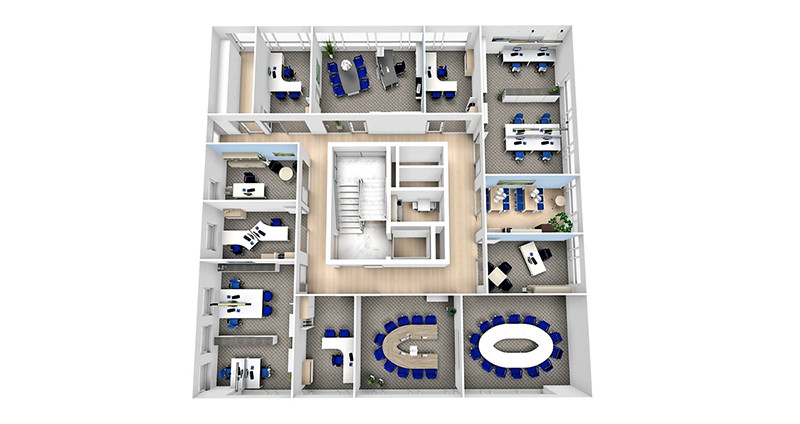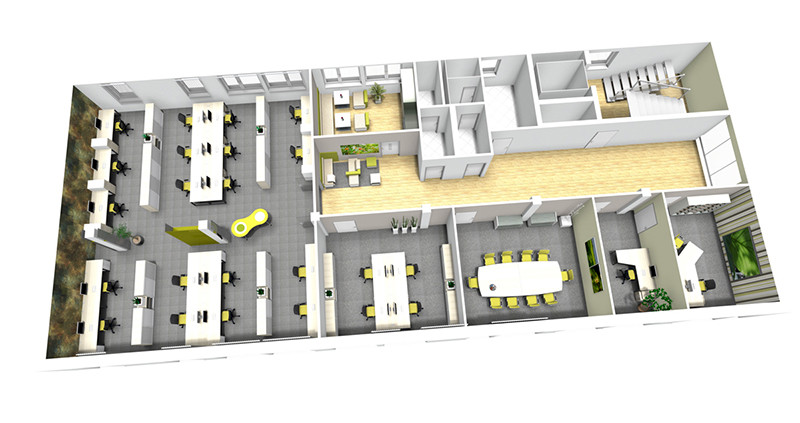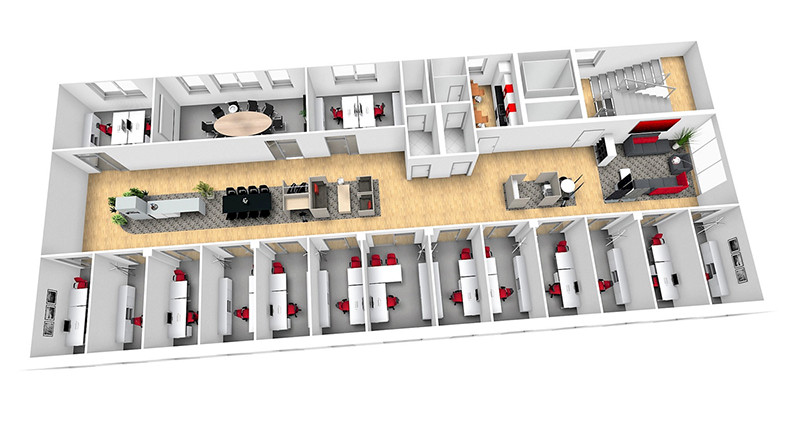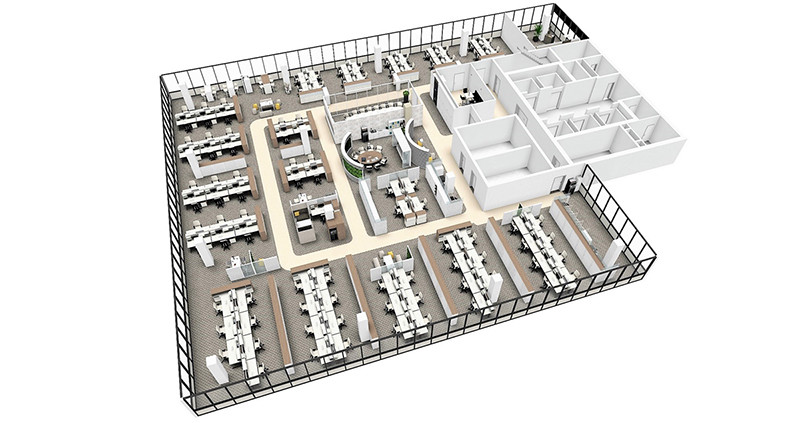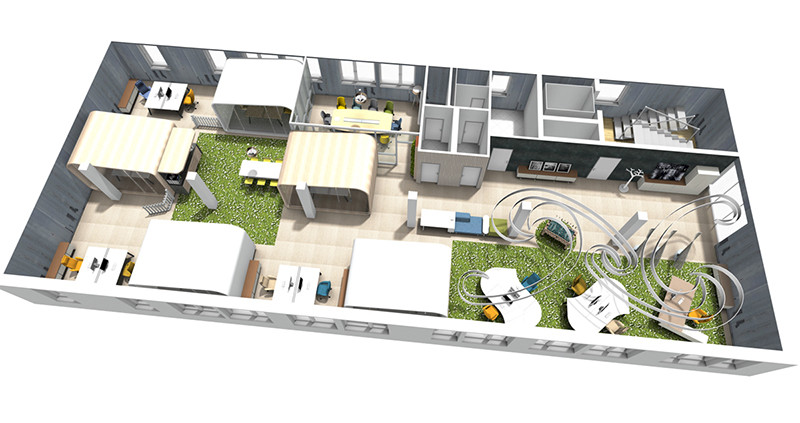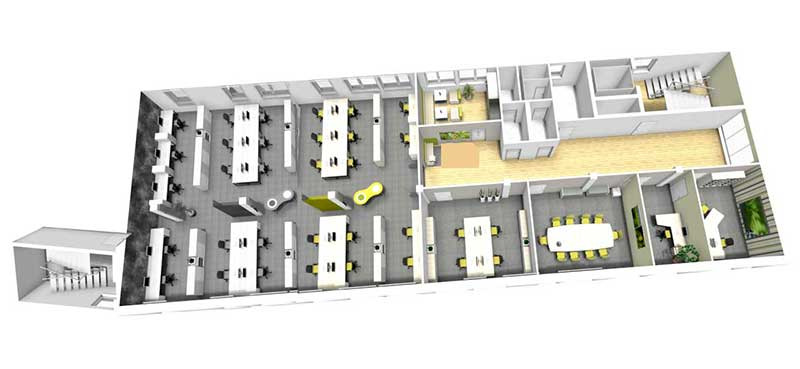Individual offices, open space and group offices – each office type comes with its own strengths and weaknesses. Here’s a short summary of the main characteristics and best use cases for each.
Cellular Office
“Cellular offices are individual or multi-person offices typically located along the façade of a building and accessed via a common corridor. Multi-person offices usually accommodate up to six desk or screen workstations.”
Source: ASR A1.2
Individual offices are ideal for tasks requiring a high level of confidentiality or deep concentration. Multi-person offices are best suited for small teams that need to collaborate closely and cover for one another when necessary.
Group Office
“Group offices are window-facing units designed for up to 25 desk or VDU workstations, which are clearly separated using partitions or flexible space-structuring systems.”
Source: ASR A1.2
Like multi-person offices, group offices are well-suited for teams that work closely together and benefit from easy peer support. However, they offer limited support for tasks that require focused, individual work.
Combi Office
“Combi offices typically combine elements of cellular and open-plan offices. The ‘work booths’ are generally occupied by one person each and are arranged around a shared area with meeting corners, filing systems, service points, kitchenettes, etc., separated by glass walls and doors.”
Source: ASR A1.2
Combi offices are especially suitable for organisations where a significant portion of work requires individual focus, but where frequent (and sometimes spontaneous) communication is also necessary.
“If you are considering combining several small rooms into a larger office unit, you should take into account not only the building’s structural integrity but also the ceiling heights. The following minimum ceiling heights must be observed:
- For up to 50 m²: at least 2.50 m
- For more than 50 m²: at least 2.75 m
- For more than 100 m²: at least 3.00 m
- For more than 2,000 m²: at least 3.25 m”
Source: ASR A1.2
More information on these technical guidelines can be found in the chapter on space planning.
Open-Plan Office
“Open-plan offices are the spatial and organisational grouping of desk or VDU workstations over a floor area of 400 m² or more. These may be structured with partitions.”
Source: ASR A1.2
Open-plan offices are particularly suitable for organisations undergoing frequent structural or operational changes.
Modern Open-Plan Office
Modern Open-Plan offices (Open Space) are not a distinct office type but rather a blend of different zones for work and communication. They bring together a variety of functional areas to suit a range of tasks. A digital tool for workspace management is highly recommended.
Open Spaces allow employees to choose the most appropriate work or break zone for their current needs, promoting flexibility and autonomy.
Working in Open Space environments is often combined with desk sharing or non-territorial working – meaning some or all staff members do not have assigned desks. This frees up space for a more diverse and dynamic working environment, such as expanded collaboration and break areas.
Multi-Space Office
Similar to the Modern Open-Plan office, the Multi-Space office is not a standalone office type, but a combination of different work environments. The key difference is that Multi-Space setups also vary the types of focus workplaces provided. Typically, large group offices are complemented by a smaller number of individual or multi-person offices.
Multi-Space offices make it easier to accommodate a wider range of workstyles than Open Space concepts alone. Detailed planning based on actual needs is essential. A digital room booking or occupancy tool is again recommended here.




